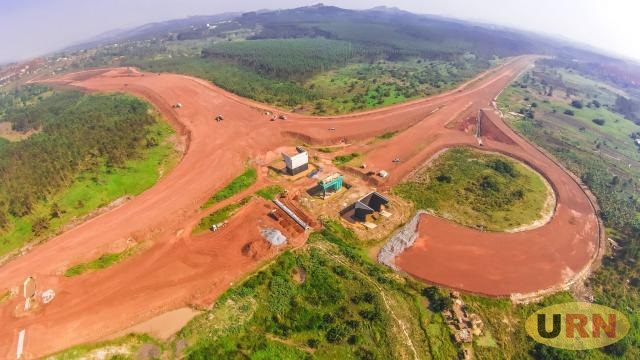
Kampala, Uganda | THE INDEPENDENT | The Ministry of Works and Transport is confident that the Busega—Mpigi Expressway project will be completed in 2027.
The project dubbed a game changer in transport infrastructure, is now estimated at 46 percent completion.
The project which is part of Africa’s Northern Transport Corridor from Kenya through Uganda to the Democratic Republic of Congo commenced in 2014 with the procurement process for a contractor and China Communications Construction Company was picked.
It had also been commissioned to reconstruct the Kibuye-Busega stretch and picking was aimed at minimising costs by retuning one contractor.
The works were then expected to commence in 2019 and last 36 months (ending in 2021).
After years of no progress, in 2019, the government replaced CCCC with a consortium of China Civil Engineering Construction Corporation (CCECC) in a joint venture with China Railway 19th Bureau Group (U) Ltd.
The African Development Bank and the African Development Fund are funding the project’s physical works to the tune of 151 million dollars while the government is counterpart funding for compensation amounts to 41 million.
Construction began in May 2020 and the works were supposed to be completed in mid-2023.
However, according to the ministry, compensation challenges as well as the COVID-19 pandemic effects on the country’s international travels meant that the project’s progress slowed down greatly.
“The delay is explained by, indeed unique project-related challenges, for instance, effects of COVID-19 on the construction sector and the economy by extension and protracted land acquisition issues and limited funds,” says Allan Ssempebwa, a communications officer at the Ministry of Works.
On compensation challenges, he gives the example of a clash with cultural enthusiasts along the way. “At one point the infamous Nabukalu tree, which was deemed a spiritual tree blocked progress,” he says of the 5-year saga that ended after a court ruled in favour of the Uganda National Roads Authority (UNRA).
UNRA paid some 4.66 million shillings out of the 500 million that the claimants of the land and custodians of the said spiritual/cultural site were demanding.
Due to these challenges, as well as limited funds for land acquisition, only 15 percent of the work had been completed as of March 2022, necessitating the setting of a new completion date as 2025.
Ssempebwa explains that even with resources available, compensation for property is complex and can be lengthy.
“Compensation of land/property is compulsory, a lengthy exercise, but must be done, engaging all property owners to provide necessary documentation, in some cases missing, family disputes over land etc,” he says, adding: “the project underwent a redesign to minimize the impact on settlements and reduce costs.”
While the physical works are funded by the African Development Bank Group, compensation is the responsibility of the government, which has severely changed budgeting priorities due to resource scarcity.
“It’s easy to ignore these factors but these have been major and indeed slowed down progress,” says Ssempebwa on the new 2027 completion date.
The works have picked up a pace and physical progress is now at 46 percent, following progress in land acquisition, with 90 percent of affected persons along the main Expressway alignment, now compensated.
However, he says that a lot of work is ongoing away from the sight of the public, hence the feeling that there is no progress.
“It takes on a greenfield location, which may not be visible from the main road, leading to the perception of limited or no progress! Works is progressing,” he says.
The scope of the project includes a dual expressway with four lanes,13 bridges totalling 709 meters, four interchanges, four 4 toll plazas and several new link roads totalling 21.3 km to connect areas like Katende, Bujuuko, Kyengera, Lungala, and Mpigi town.
Currently, all bridges are above foundation level, and ongoing works include swamp treatment, earthworks, and the construction of bridge superstructures.
A recent study shows that the project has a strong economic potential, with an estimated profit of 251 million dollars and a return rate of 20.3 percent.
More than half (12 kilometres) of the expressway goes through a permanent swamp and another five kilometres in a seasonal swamp along the main route.
Based on a house-by-house count in the right-of-way corridor, it is estimated that about 490 households (3,023) individuals are physically displaced as a result of the Project.
The Expressway is expected to make travelling smoother on the Northern Corridor, connecting Mombasa Port to DRC, Rwanda and Burundi through Uganda.
*****
URN
 The Independent Uganda: You get the Truth we Pay the Price
The Independent Uganda: You get the Truth we Pay the Price


